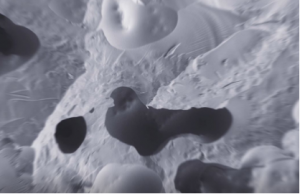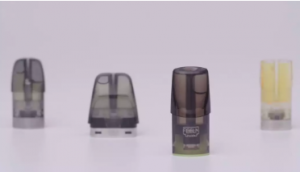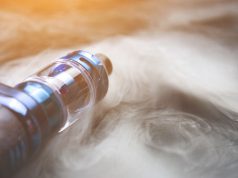Atomization is a process that is very common in daily life, and is carried out by devices such as humidifiers, facial steamers, fog machines, and so on. Atomization techniques vary widely, yet at the core of the process is the coil. Nowadays, coil materials vary widely and include glass fiber, organic cotton and metallic mesh, yet ceramic has developed to be an essential part of high quality coils. What are the advantages of ceramics over other materials?
Why ceramic coils?
The ceramic material used in coils is different from the type commonly used in crockery and other daily items. It has been engineered with porous microstructures forming special compositions.
The FEELM coils are composed of a ceramic substrate and a layer of metallic film. The ceramic is sintered at a high temperature and formed into the shape of a bowl. The metallic film is printed onto the substrate surface with an “s-shape” in order to provide efficient and even heating, just like a stove and pot in cooking. The atomizer vapourizes the e-liquid into vapour as it is heated by the metallic film at the precise temperature.

The raw materials used in FEELM coils are processed minerals from nature. After special forming, drying and high-temperature sintering processes, interconnected micropores are formed inside. The average pore size is about one-fifth of the width of a human hair.
Why are these ceramic coils ideal for vaping?
The micropores found in the FEELM coil play a vital role in conducting and locking the e-liquid inside the substrate during the on and off process of vaporization. Thanks to the surface tension and capillary action, the e-liquid can permeate through the substrate and be absorbed on the surface.
The porous ceramic coil has both strong absorbability and biological compatibility, similar to the activated carbons which are widely used in many household appliances, such as water filters, refrigerator deodorants, facial masks and toothpaste, and so forth.
What are other advantages of ceramic coils?
When compared to other materials such as fiber and cotton, the FEELM coil’s physical structure, material property and industrial design, contribute to a faster rise in temperature and even temperature distribution on the substrate surface. This precise temperature control enabled by the FEELM technology can greatly reduce the amount of aldehydes and ketones produced during the vaporization process.
Moreover, the even heating of the FEELM coil, can effectively eliminate most of the partial carbonation, and reduce the burnt taste problem which has troubled the vaping industry since the inception of e-cigarettes.
The aerosol particles produced by FEELM ceramic coil are smaller than 1μm which lead to better lung absorption, more intense flavorus and greater satisfaction.
https://www.vapingpost.com/vape-coil/















